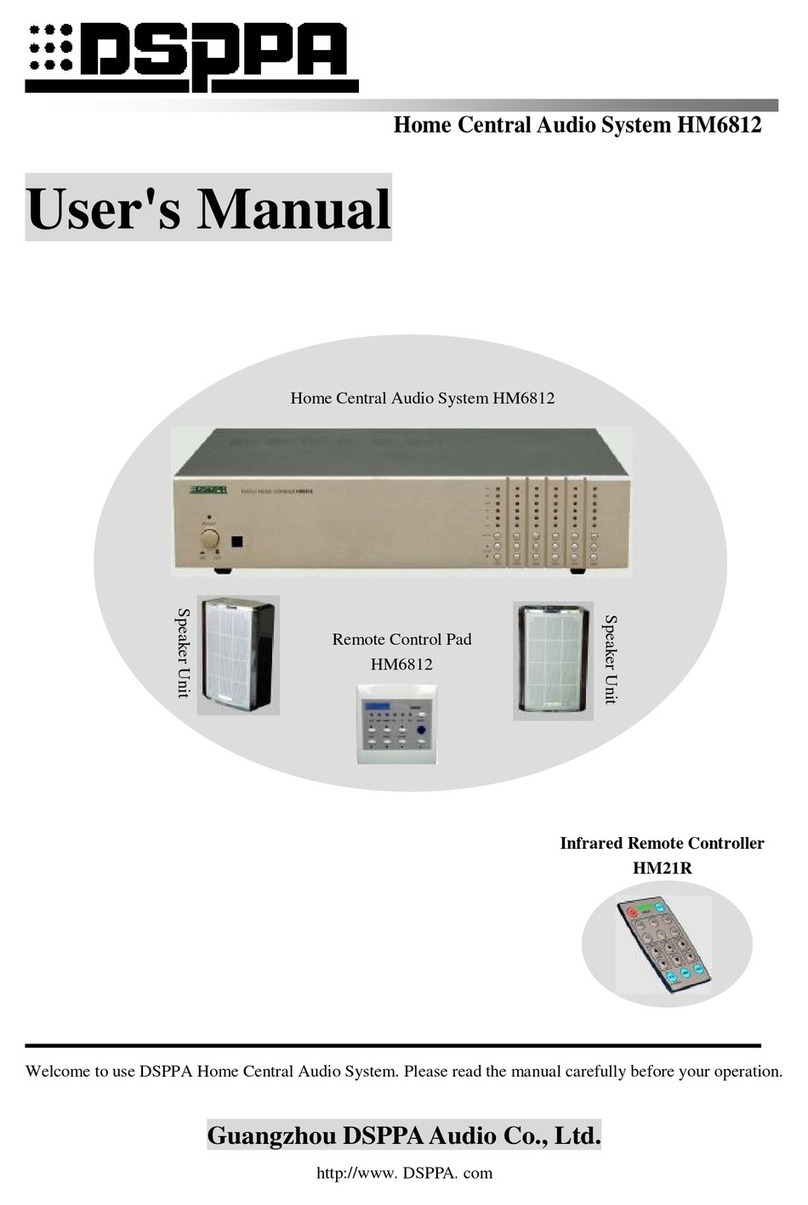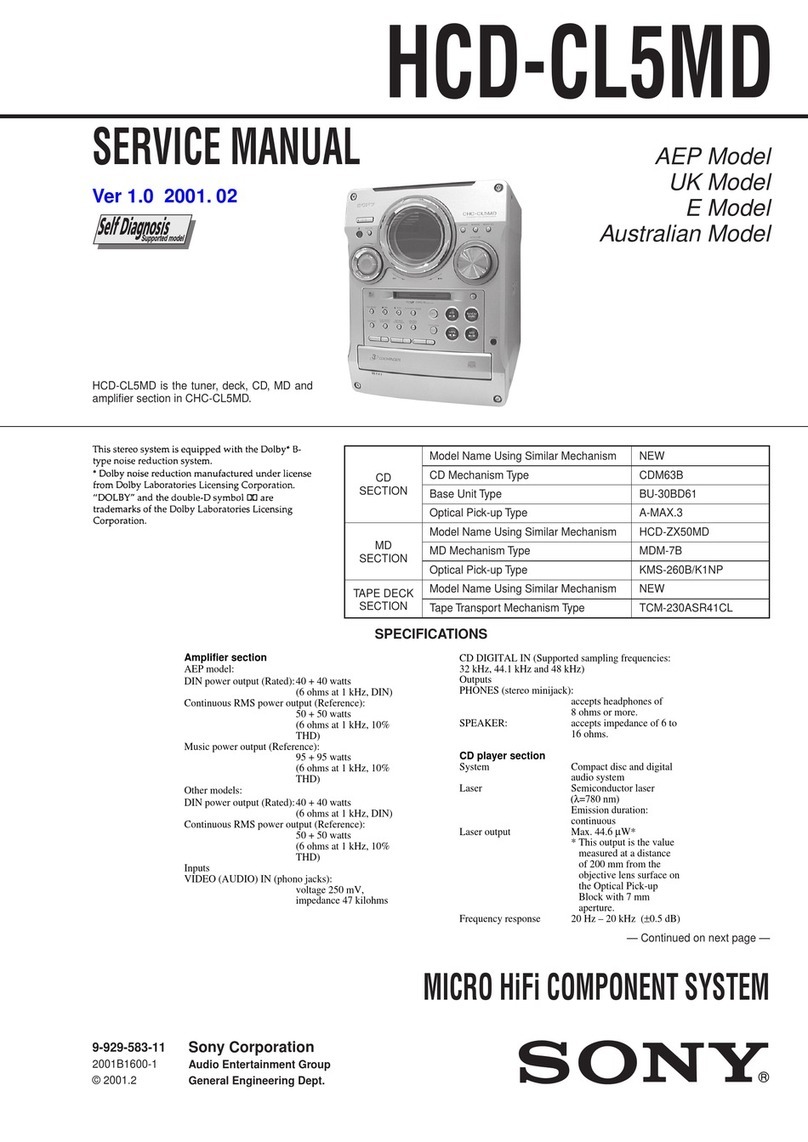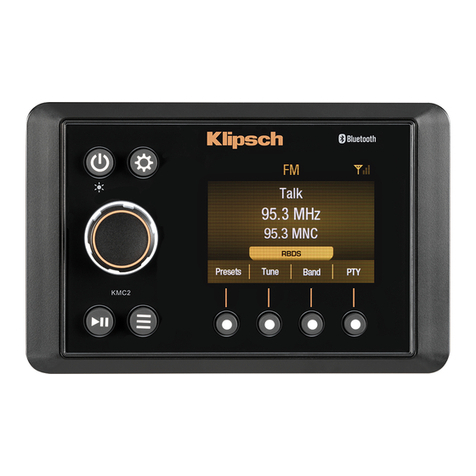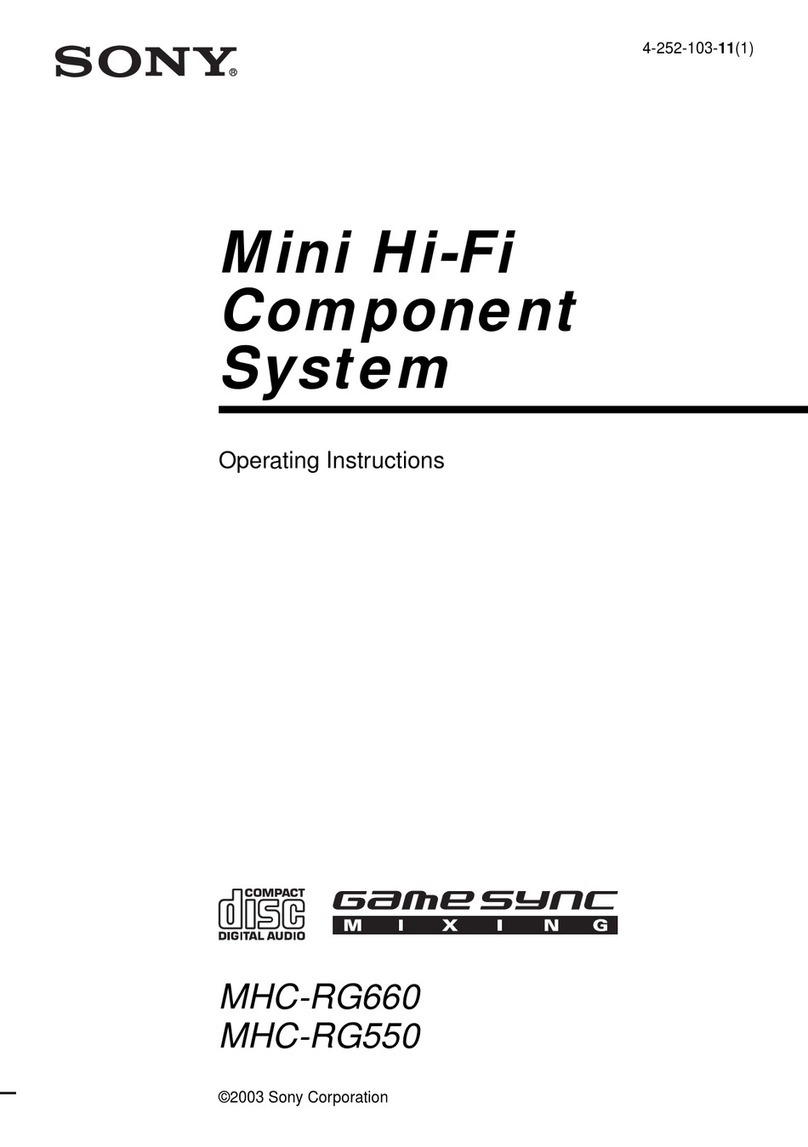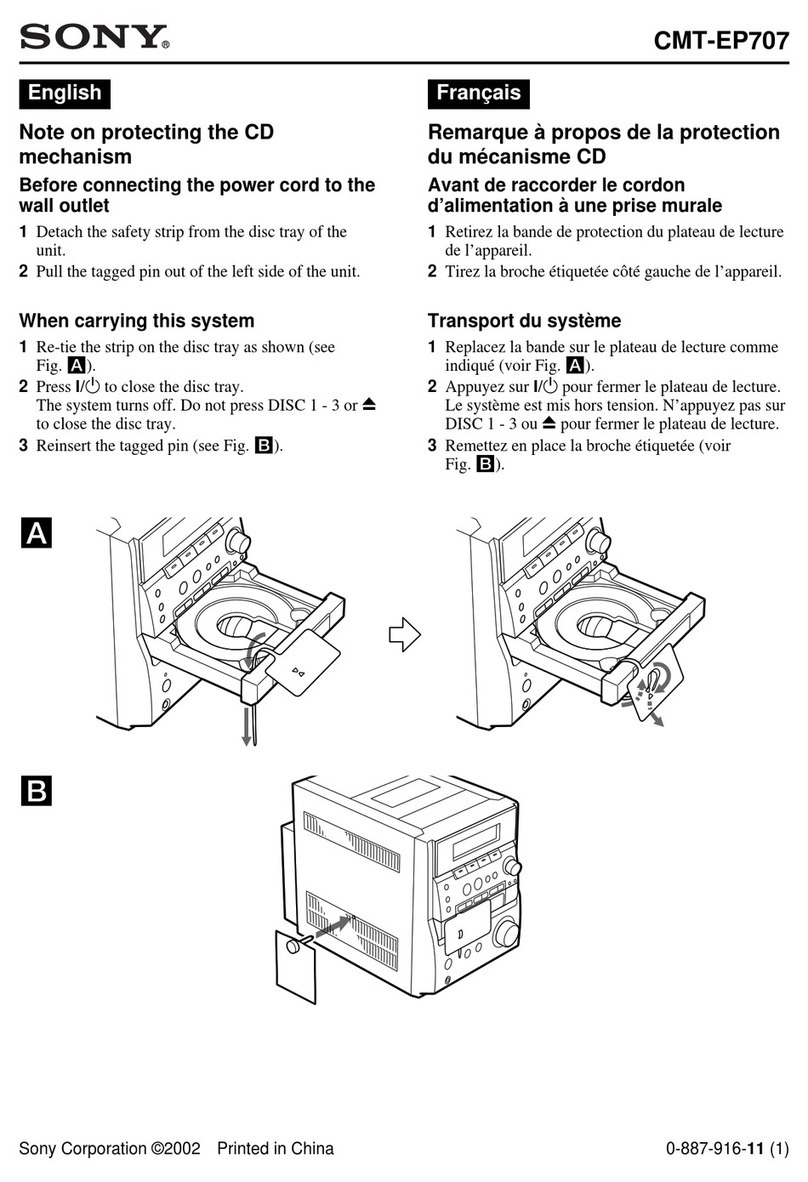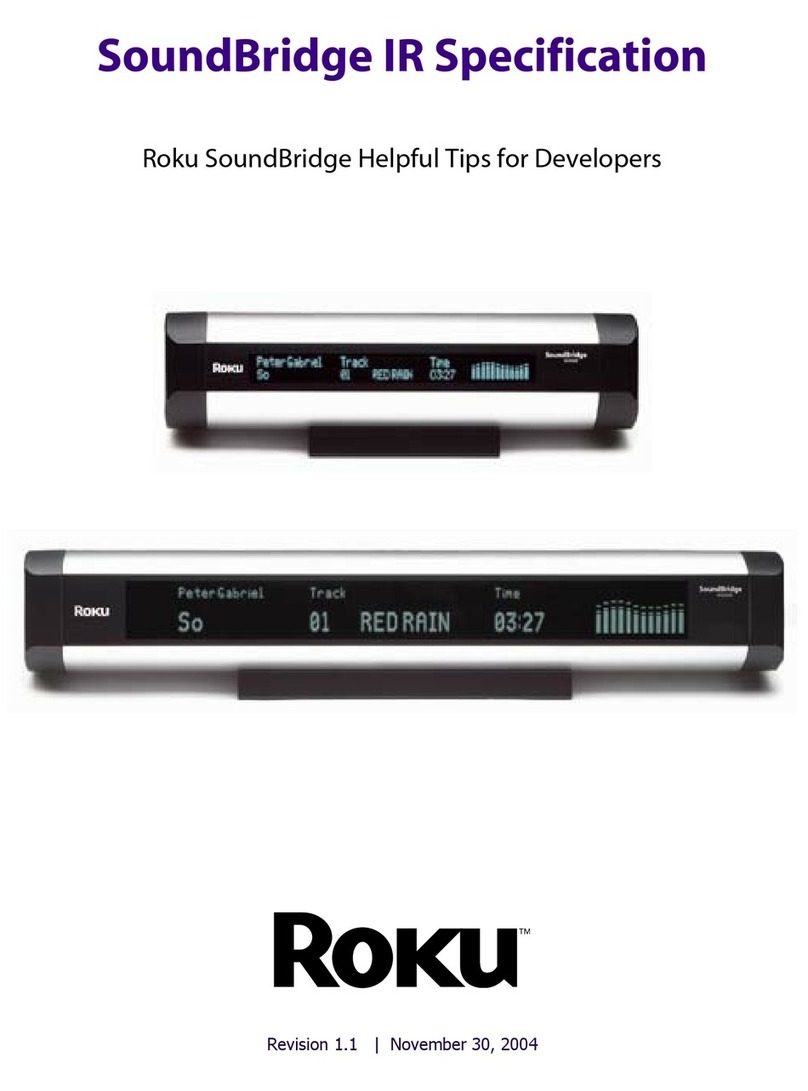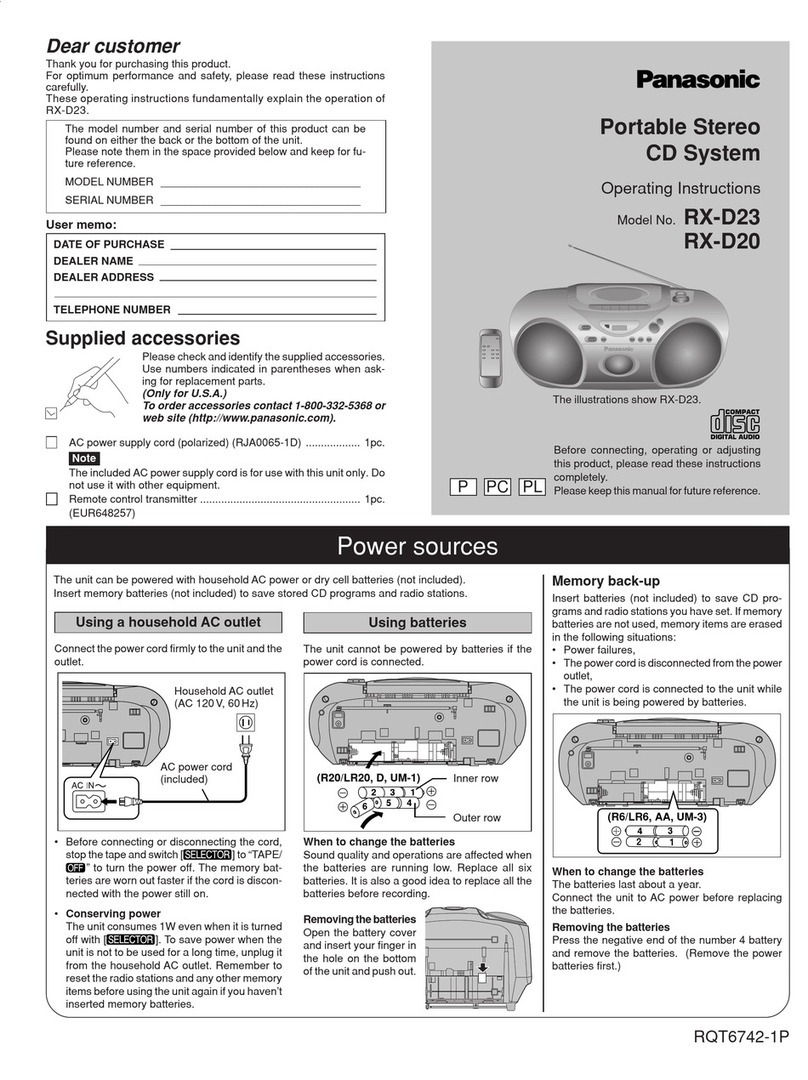trig TX56 User manual

TX56/56A and TX57/57A Installation
Manual
01776-00-01-AD
5 April 2022
Trig Avionics Europe B.V.
Hardwareweg 3
3821 BL Amersfoort
Netherlands
Copyright Trig Avionics 2019

This page intentionally left blank

TX56/56A and TX57/57A Installation Manual 5 April 2022
01776-00-01-01 Issue AD
______________________
Trig Avionics Page i
CONTENTS
1.PREFACE ................................................................................................. 1
1.1PURPOSE ............................................................................................. 1
1.2SCOPE ................................................................................................. 1
1.3CHANGES FROM PREVIOUS ISSUE ....................................................... 1
1.4DOCUMENT CROSS-REFERENCES ........................................................ 1
2.INTRODUCTION .................................................................................... 3
2.1TX56 AND TX57 DESCRIPTION .......................................................... 3
2.2INTERFACES ........................................................................................ 4
3.TECHNICAL SPECIFICATIONS ......................................................... 7
3.1COMMON FEATURES ........................................................................... 7
3.2VOR SPECIFICATIONS ......................................................................... 7
3.3LOC SPECIFICATIONS ......................................................................... 8
3.4GLIDESLOPE SPECIFICATION ............................................................... 8
3.5SPECIFIC TO TX56 (TRIG PART NUMBER 01576-00-01) ..................... 9
3.6SPECIFIC TO TX57 (TRIG PART NUMBER 01578-00-01) ..................... 9
3.7SPECIFIC TO TX56A (TRIG PART NUMBER 01954-00-01) ................ 10
3.8SPECIFIC TO TX57A (TRIG PART NUMBER 01956-00-01) ................ 11
3.9PHYSICAL SPECIFICATIONS (IN TRAY) .............................................. 12
3.10LOW VOLTAGE OPERATION .............................................................. 1 2
3.11INSTALLATION APPROVAL ................................................................ 13
3.12NON-ETSO FUNCTIONS .................................................................... 13
3.13LIMITATIONS .................................................................................... 13
3.13.1Installation...............................................................................13
3.13.2Nav Dual Watch.......................................................................13

TX56/56A and TX57/57A Installation Manual 5 April 2022
01776-00-01 Issue AD
______________________
Page ii Trig Avionics
3.13.3Audio Interfaces.......................................................................14
4.UNIT AND ACCESSORIES SUPPLIED ............................................ 15
4.1TX56 NAV/COM ITEMS .................................................................... 15
4.2TX56A NAV/COM ITEMS .................................................................. 15
4.3TX57 NAV/COM ITEMS .................................................................... 15
4.4TX57A NAV/COM ITEMS .................................................................. 15
4.5INSTALLATION KIT ........................................................................... 16
4.6REQUIRED ITEMS .............................................................................. 17
5.INSTALLATION ................................................................................... 18
5.1UNPACKING AND INSPECTING EQUIPMENT ....................................... 18
5.2INSTALLATION OVERVIEW ................................................................ 18
5.3COOLING REQUIREMENTS ................................................................. 19
5.4ELECTRICAL CONNECTIONS .............................................................. 2 0
5.4.1Com Connector D-type ............................................................20
5.4.2Nav Connector D-type..............................................................21
5.4.3Orientation Diagram................................................................24
5.4.4D Connector Crimp Terminals.................................................24
5.4.5Power and Ground Wiring.......................................................25
5.4.6Stereo Wiring Considerations..................................................26
5.4.7Mono Wiring Considerations...................................................27
5.4.8Audio Wiring............................................................................27
5.4.9Example Wire Harness.............................................................30
5.5ANTENNA INSTALLATION ................................................................. 30
5.5.1Com Antenna............................................................................30
5.5.2Com Antenna Ground Plane....................................................31

TX56/56A and TX57/57A Installation Manual 5 April 2022
01776-00-01-01 Issue AD
______________________
Trig Avionics Page iii
5.5.3Nav Antenna.............................................................................31
5.5.4Splitting and Combining Nav Signals ......................................32
5.5.5Antenna Cables........................................................................32
5.5.6BNC Connections.....................................................................33
5.6INTERFACE DETAILS ......................................................................... 34
5.6.1Speaker Output.........................................................................34
5.6.2Headphone Outputs..................................................................34
5.6.3Mono Com Audio Output.........................................................34
5.6.4Transmit Interlock....................................................................34
5.6.5Lighting Bus Input....................................................................34
5.6.6PTT1/2 Key Input.....................................................................35
5.6.7Intercom Key Input...................................................................35
5.6.8Auxiliary Audio Input...............................................................35
5.6.9Music Audio Input....................................................................36
5.6.10Microphone Input.....................................................................36
5.6.11RS232 Input/Output..................................................................36
5.6.12Remote Flip-flop ......................................................................36
5.6.13Nav Audio Output.....................................................................36
5.6.14Nav Right/Left Output..............................................................36
5.6.15Glideslope Up/Down Output....................................................37
5.6.16To/From Flag +/- Output.........................................................37
5.6.17Nav and Glideslope Valid Flag Outputs..................................37
5.6.18ILS Energise Output.................................................................37
5.6.19Back-Course Annunciator Output............................................37
5.6.20Superflag Outputs ....................................................................37

TX56/56A and TX57/57A Installation Manual 5 April 2022
01776-00-01 Issue AD
______________________
Page iv Trig Avionics
5.6.21Composite Output ....................................................................38
5.6.22Switched Power........................................................................38
5.6.23Power Control..........................................................................38
5.6.24DME Interface..........................................................................38
5.6.25OBS Interface...........................................................................38
5.6.26Power Input..............................................................................39
5.6.27Ground Returns........................................................................39
6.INSTALLATION SETUP AND TEST ................................................ 41
6.1INITIAL POWER ON ........................................................................... 41
6.2CONFIGURATION ITEMS .................................................................... 41
6.2.1Intercom Volume......................................................................42
6.2.2Intercom Squelch......................................................................42
6.2.3Music Volume...........................................................................42
6.2.4Music Muting ...........................................................................42
6.2.5Frequency Step Size .................................................................43
6.2.6Internal Nav Audio Routing.....................................................43
6.2.7CDI Type..................................................................................43
6.2.8OBS Calibration.......................................................................44
6.2.9Remote Protocol Choice ..........................................................44
6.2.10Auxiliary Input Volume............................................................44
6.2.11Auxiliary Input Muting.............................................................44
6.2.12Sidetone Volume.......................................................................45
6.2.13Radio Squelch ..........................................................................45
6.2.14Audio Test Tones......................................................................45
6.2.15Microphone gain adjustment....................................................45

TX56/56A and TX57/57A Installation Manual 5 April 2022
01776-00-01-01 Issue AD
______________________
Trig Avionics Page v
6.2.16LCD Dim Point ........................................................................46
6.2.17LCD Brightness Curve.............................................................46
6.2.18Single PTT Mode......................................................................46
6.2.19Diagnostic Information Display...............................................47
7.POST INSTALLATION CHECKS ...................................................... 48
8.NORMAL OPERATION ...................................................................... 49
8.1FRONT PANEL ................................................................................... 49
8.2DISPLAY MODES ............................................................................... 49
8.3COM RADIO DISPLAY ....................................................................... 49
8.4NAV RADIO DISPLAY ........................................................................ 50
8.5OBS DISPLAY ................................................................................... 51
8.6T/F (TO/FROM) BUTTON ................................................................... 52
8.7LOCALIZER BACK-COURSE APPROACHES ......................................... 52
8.8ON/OFF, VOLUME, SQUELCH, IDENT KNOB ...................................... 52
8.9COM RADIO TUNING STEP SIZE ........................................................ 53
8.10MON BUTTON .................................................................................. 53
8.11PLAY BUTTON ................................................................................. 56
8.12INTERCOM FUNCTION ....................................................................... 56
8.13FREQUENCY DATABASE .................................................................... 56
8.14RECENT FREQUENCIES ...................................................................... 57
8.15GPS DATABASE ................................................................................ 58
8.16ENTERING NEW FREQUENCIES .......................................................... 58
8.17SAVING AND LOADING THE FREQUENCY DATABASE ........................ 59
8.18CONFIGURATION MODE .................................................................... 60
8.19GENERAL LOW TEMPERATURE OPERATION ...................................... 61

TX56/56A and TX57/57A Installation Manual 5 April 2022
01776-00-01 Issue AD
______________________
Page vi Trig Avionics
8.20WARNING MESSAGES ....................................................................... 61
8.21FAULT ANNUNCIATION ..................................................................... 62
9.CONTINUED AIRWORTHINESS ...................................................... 63
9.1CLEANING THE FRONT PANEL ........................................................... 63
10.LIMITED WARRANTY ................................................................... 64
11.ENVIRONMENTAL QUALIFICATION FORMS ........................ 65
12.INSTALLATION DRAWINGS ........................................................ 73
13.WIRING DIAGRAMS ...................................................................... 75
14.USB FILE FORMAT ......................................................................... 83
14.1INTRODUCTION ................................................................................. 83
14.2COM FREQUENCIES ........................................................................... 83
14.3NAV FREQUENCIES ........................................................................... 85
14.4USB COMPATIBILITY ........................................................................ 85

TX56/56A and TX57/57A Installation Manual 5 April 2022
01776-00-01 Issue AD
______________________
Trig Avionics Page 1
1. Preface
1.1 Purpose
This manual describes the physical and electrical characteristics and the
installation requirements for a TX56 or TX57 and TX56A or TX57A
Nav/Com.
1.2 Scope
This manual applies to the installation of the TX56, TX57, TX56A and
TX57A Nav/Com.
At the publication date of this manual the Com software version identifier is
1.0, the Nav software version is 1.0 and the FPGA version identifier is 1.2.
The software and FPGA versions are subject to change without notice.
1.3 Changes from Previous Issue
3.13.3 Audio Interfaces Minor editorial change.
1.4 Document Cross-References
01775-00 TX56/56A and TX57/57A Nav/Com Operating
Manual
AB
ETSO-2C169a VHF Radio Communication Transceiver
Equipment Operating within the Radio
Frequency Range 117.975 – 137 Megahertz
EASA
ETSO-2C128 Devices That Prevent Blocked Channels used in
Two-Way Radio Communications Due to
Unintentional Transmissions
EASA
ETSO-2C34f ILS Glide Slope Receiving Equipment Operating
within the Radio Frequency Range 328.6 – 335.4
Megahertz
EASA
ETSO-2C36f Airborne ILS Localizer Receiving Equipment
Operating within the Radio Frequency Range
EASA

TX56/56A and TX57/57A Installation Manual 5 April 2022
01776-00-01 Issue AD
______________________
Page 2 Trig Avionics
108 – 112 Megahertz
ETSO-2C40c VOR Receiving Equipment Operating Within the
Radio Frequency Range 108 – 117.95 Megahertz
EASA

TX56/56A and TX57/57A Installation Manual 5 April 2022
01776-00-01 Issue AD
______________________
Trig Avionics Page 3
2. Introduction
2.1 TX56 and TX57 Description
The TX56 and TX57 Nav/Com systems are ED-23C compliant class C (25
kHz offset carrier) and class H1 and H2 (8.33 kHz offset carrier)
communication radios combined with an ED-22B compliant VOR receiver, an
ED-46B class A (manual landing systems) compliant localiser receiver, and an
ED-47B compliant glideslope receiver. The TX56 has a nominal transmitter
power output of 10 watts, and meets the power output requirements for Class 4
and Class 6. The TX57 has a nominal power output of 16 watts, and meets the
power output requirements for Class 3 and Class 5. The TX56 and TX57 are
certified to ETSO-2C169a, 2C128, 2C34f, 2C36f and 2C40c.
The TX56A and TX57A are variants that use 25 kHz channel spacing and are
ED-23C compliant class C (25 kHz offset carrier) communication radios. The
TX56A has a nominal power output of 10 watts, and meets the power output
requirements for Class 4. The TX57A has a nominal power output of 16 watts,
and meets the power output requirements for Class 3. The TX56A and TX57A
are also certified to ETSO-2C169a, 2C128, 2C34f, 2C36f and 2C40c.
Other than the difference in channel spacing the TX56A/57A variants are
identical to the TX56/57 and unless otherwise stated all references to the
TX56/57 also apply to the TX56A/57A.
The TX56 can be powered from either a 14 volt nominal or 28 volt nominal
DC power supply with no configuration changes required. The TX57 requires
a 28 volt nominal DC power supply.
The following combinations apply:
Model Part
Number
Tx
Power
8.33 kHz
Channels
25 kHz
Channels
Input
Voltage
TX56 01576-00-xx 10 W Yes Yes 11 – 33
TX56A 01954-00-xx 10 W No Yes 11 – 33
TX57 01578-00-xx 16 W Yes Yes 22 – 33
TX57A 01956-00-xx 16 W No Yes 22 – 33

TX56/56A and TX57/57A Installation Manual 5 April 2022
01776-00-01 Issue AD
______________________
Page 4 Trig Avionics
2.2 Interfaces
At the rear, the Nav/Com unit has a 25 way D-type connector for the
communication radio and audio system, and a 44 way D-type connector for the
navigation receiver. There are two antenna connectors for blind mating with
the corresponding connectors in the mounting tray – one for the
communications radio, and one for the navigation receiver.
Note: A single antenna input is provided for the VOR/LOC and
Glideslope receivers. Many aircraft VOR/LOC antennas also provide
adequate coverage of the glideslope band, and a single antenna can
be used. Where the airframe or antenna arrangement precludes this,
an external antenna combiner will be needed to present both inputs
on the single connector.
The 25 way D-type interface provides the following services:
INPUTS DESCRIPTION
Power input The TX56 operates on 11 to 33 volts DC. The TX57
operates on 22 to 33 volts DC.
Lighting bus
input
Connects to the aircraft lighting bus and is used to adjust
the switch lighting intensity.
RS232 input An optional input to allow preloading of frequencies,
generally from a GPS navigator.
Push-to-talk
inputs
There are two push to talk inputs corresponding to the two
microphones. For backward compatibility with older
installations both microphones can optionally be gated by
a single PTT input.
External flip-
flop input
An optional keyswitch input to enable remote transfer of
primary and secondary frequencies
Intercom
keyswitch
An optional input to allow the intercom to be switch
controlled.
Microphone
inputs
There are two microphone inputs, suitable for
conventional aircraft microphones.

TX56/56A and TX57/57A Installation Manual 5 April 2022
01776-00-01 Issue AD
______________________
Trig Avionics Page 5
Auxiliary
audio input
A single connection to allow audio annunciators or ident
tones to be routed to the headphones and speaker.
Auxiliary audio input is not routed to mono audio output.
Music audio
input
A two channel music input to allow connection of a stereo
audio signal of 1.5Vrms into a 600 ohms load. Audio is
routed to the headphones only.
OUTPUTS
Speaker
output
A speaker output suitable for a cabin speaker with
impedance of 4 ohms or greater.
Audio routing: Received audio and auxiliary input.
Headphone
outputs
Two stereo headphone outputs suitable for conventional
aircraft headsets with impedance in the region of 150 –
600 ohms.
Audio routing: Intercom, received audio, auxiliary and
music inputs, transmitter sidetone
Mono audio
output
A mono audio output designed to connect to an aircraft
audio panel with an impedance of 600 ohms.
Audio routing: Received audio, transmitter sidetone
The 44 way D-type interface provides the following services:
INPUTS DESCRIPTION
Power input The Nav receiver has a separate power input from the
Com radio. It operates on 11 to 33 volts DC.
OBS Resolver
Inputs
Conventional four wire D/E/F/G input from an external
OBS.
OUTPUTS
Nav composite
output
A VOR/LOC composite audio signal for instruments with
built-in converters.
Nav audio
output
Audio output for Nav voice and ident connection to audio
panel.

TX56/56A and TX57/57A Installation Manual 5 April 2022
01776-00-01 Issue AD
______________________
Page 6 Trig Avionics
Nav CDI
outputs
Left/Right, To/From, Up/Down, and flag outputs.
OBS resolver
outputs
Conventional two wire C/H output to drive the external
OBS.
DME interface King style Data/Clock/Request/Common interface to
channel an external DME.
Superflags Nav and glideslope superflag outputs.
Back course Annunciator output when Nav receiver is in localiser
back-course mode.
ILS energise Output active when an ILS is tuned.
Switched
power
Switched power output for nav indicator or other
accessories.

TX56/56A and TX57/57A Installation Manual 5 April 2022
01776-00-01 Issue AD
______________________
Trig Avionics Page 7
3. Technical Specifications
3.1 Common Features
Specification Characteristics
FCC Identification VZI01578
Applicable documents EUROCAE ED-23C, EUROCAE ED-67,
EUROCAE ED-22B, EUROCAE ED-46B,
EUROCAE ED-47B, EUROCAE ED-14G
(RTCA DO-160G)
Software ED-12C (RTCA DO-178C) Level B
Hardware ED-80 (RTCA DO-254) Level C
Altitude 55,000 feet
Humidity 95% @ +50C for 6 hours; 85% @ +38C for
16 hours.
Tested to Category A in ED-14G (DO-
160G)
Operating Temperature -20C to +55C
3.2 VOR Specifications
Specification Characteristics
Compliance ETSO-2C40c
Receiver Audio Sensitivity Typical -105 dBm for 6 dB SINAD
Course Deviation Sensitivity Typical -105 dBm for 2 degree error
AGC Characteristic Less than 3 dB variation from -99 dBm to -
13 dBm
VOR Bearing Accuracy Less than 2.7 degrees
Audio Output Minimum 40 mW into 600 ohms

TX56/56A and TX57/57A Installation Manual 5 April 2022
01776-00-01 Issue AD
______________________
Page 8 Trig Avionics
Audio Response Less than 6 dB variation from 350 Hz to
2500 Hz. Ident filter at 1020 Hz.
Composite Output 0.5 V RMS into 1 kohm
3.3 LOC Specifications
Specification Characteristics
Compliance ETSO-2C36f
Receiver Audio Sensitivity Typical -105 dBm for 6 dB SINAD
Course Deviation Sensitivity Typical -105 dBm for 60% of standard
deflection
AGC Characteristic Less than 3 dB variation from -99 dBm to -
13 dBm
Output Deflection ± 90 mV for standard deflection
Audio Output Minimum 40 mW into 600 ohms
Audio Response Less than 6 dB variation from 350 Hz to
2500 Hz. Ident filter at 1020 Hz
Composite Output 0.39 V RMS into 1 kohm
3.4 Glideslope Specification
Specification Characteristics
Compliance ETSO-2C34f
Sensitivity Typical -80 dBm for 60% of standard
deflection
Output Deflection ± 78 mV for standard deflection

TX56/56A and TX57/57A Installation Manual 5 April 2022
01776-00-01 Issue AD
______________________
Trig Avionics Page 9
3.5 Specific to TX56 (Trig Part Number 01576-00-01)
Specification Characteristics
Compliance ETSO-2C169a Class C, E, H1, H2, 4, 6,
ETSO-2C128
Power Requirements 11 – 33 volts DC. Typical 6.1 watts @ 14
volts.
Input Current (Com) Receive typical 300 mA, max 900 mA at 14
volts.
Transmit typical 3.3 A, max 4.2 A at 14
volts.
Input Current (Nav) Typical 140 mA at 14 volts.
Transmitter Frequency 118.000 MHz to 136.992 MHz; 760
channels at 25 kHz spacing, 2280 channels
at 8.33 kHz spacing.
Transmitter Power 10 watts nominal carrier power
Transmitter Modulation 5K6 A3E
Stuck-mic timeout 35 seconds
Transmitter Duty Cycle 100% transmit is possible (subject to stuck
mic timeout)
Receiver Frequency 118.000 MHz to 136.992 MHz; 760
channels at 25 kHz spacing, 2280 channels
at 8.33 kHz spacing.
Receiver Sensitivity < 5uV for 6 dB SINAD
AGC Characteristic < 6dB variation 5 uV to 100 mV EMF
3.6 Specific to TX57 (Trig Part Number 01578-00-01)
Specification Characteristics
Compliance ETSO-2C169a Class C, E, H1, H2, 3, 5,
ETSO-2C128

TX56/56A and TX57/57A Installation Manual 5 April 2022
01776-00-01 Issue AD
______________________
Page 10 Trig Avionics
Power Requirements 22 – 33 volts DC. Typical 7.1 watts @ 28
volts.
Input Current (Com) Receive typical 175 mA, max 450 mA at 28
volts.
Transmit typical 3 A, max 3.8 A at 28 volts.
Input Current (Nav) Typical 80 mA at 28 volts.
Transmitter Frequency 118.000 MHz to 136.992 MHz; 760
channels at 25 kHz spacing, 2280 channels
at 8.33 kHz spacing.
Transmitter Power 16 watts nominal carrier power
Transmitter Modulation 5K6 A3E
Stuck-mic timeout 35 seconds
Transmitter Duty Cycle 25%
Receiver Frequency 118.000 MHz to 136.992 MHz; 760
channels at 25 kHz spacing, 2280 channels
at 8.33 kHz spacing.
Receiver Sensitivity < 5uV for 6 dB SINAD
AGC Characteristic < 6dB variation 5 uV to 100 mV EMF
3.7 Specific to TX56A (Trig Part Number 01954-00-01)
Specification Characteristics
Compliance ETSO-2C169a Class C, 4, ETSO-2C128
Power Requirements 11 – 33 volts DC. Typical 6.1 watts @ 14
volts.
Input Current (Com) Receive typical 300 mA, max 900 mA at 14
volts.
Transmit typical 3.3 A, max 4.2 A at 14
volts.
Input Current (Nav) Typical 140 mA at 14 volts.

TX56/56A and TX57/57A Installation Manual 5 April 2022
01776-00-01 Issue AD
______________________
Trig Avionics Page 11
Transmitter Frequency 118.000 MHz to 136.975 MHz; 760
channels at 25 kHz spacing.
Transmitter Power 10 watts nominal carrier power
Transmitter Modulation 5K6 A3E
Stuck-mic timeout 35 seconds
Transmitter Duty Cycle 100% transmit is possible (subject to stuck
mic timeout)
Receiver Frequency 118.000 MHz to 136.975 MHz; 760
channels at 25 kHz spacing.
Receiver Sensitivity < 5uV for 6 dB SINAD
AGC Characteristic < 6dB variation 5 uV to 100 mV EMF
3.8 Specific to TX57A (Trig Part Number 01956-00-01)
Specification Characteristics
Compliance ETSO-2C169a Class C, 3, ETSO-2C128
Power Requirements 22 – 33 volts DC. Typical 7.1 watts @ 28
volts.
Input Current (Com) Receive typical 175 mA, max 450 mA at 28
volts.
Transmit typical 3 A, max 3.8 A at 28 volts.
Input Current (Nav) Typical 80 mA at 28 volts.
Transmitter Frequency 118.000 MHz to 136. 975 MHz; 760
channels at 25 kHz spacing.
Transmitter Power 16 watts nominal carrier power
Transmitter Modulation 5K6 A3E
Stuck-mic timeout 35 seconds
Transmitter Duty Cycle 25%

TX56/56A and TX57/57A Installation Manual 5 April 2022
01776-00-01 Issue AD
______________________
Page 12 Trig Avionics
Receiver Frequency 118.000 MHz to 136. 975 MHz; 760
channels at 25 kHz spacing.
Receiver Sensitivity < 5uV for 6 dB SINAD
AGC Characteristic < 6dB variation 5 uV to 100 mV EMF
3.9 Physical Specifications (in Tray)
The TX56/56A and TX57/57A are the same size and weight.
Specification Characteristics
Height 33 mm (1.30”)
Width 159 mm (6.25”)
Length 231 mm (9.1”) behind the panel
274 mm (10.78”) overall
Weight (including all supplied
installation accessories)
1.26 kg. (2.78 lbs)
3.10 Low Voltage Operation
Normal operating voltage for the TX56 is any voltage between 11 and 33
volts, whilst normal operating voltage for the TX57 is any voltage between 22
and 33 volts. At these voltages all functions behave normally, and transmitter
power meets the applicable Class requirements of ED-23C.
The radio will continue to operate at a lower voltage than these ranges. As the
available voltage falls, the transmitter output power will be reduced, and at 9
volts the nominal transmitter power will be approximately 2.5 watts. The
transmitter will be inhibited below 8 volts.
The receiver also works below the nominal voltage. All receiver functions will
work normally, but as a safety feature to preserve battery power in an
emergency, at 10 volts or below the available speaker volume will reduce.
In addition a warning message, “Low Volt”, will be displayed on the screen
when the bus voltage falls below 10 volts in a TX56, or 18 volts in a TX57.
This manual suits for next models
3
Table of contents
